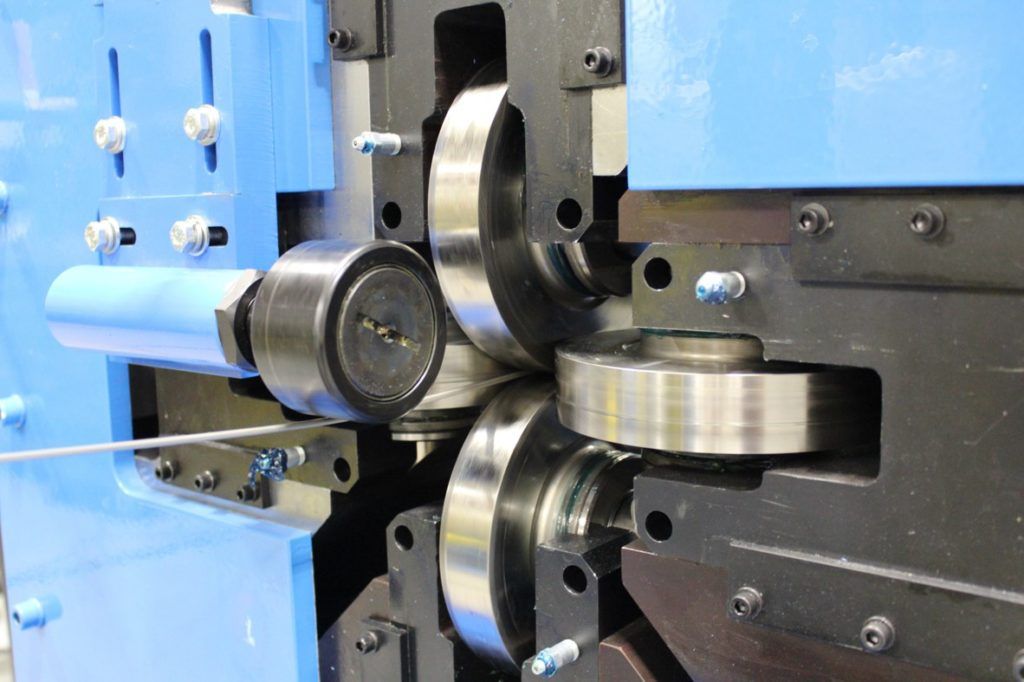Straightening machine is a powerful equipment that can be used to straighten a variety of different profiles. The machine consists of upper and lower rollers that move in opposite direction to straighten the profile.
The optimum amount of penetration between the two upper work rollers varies between material types, thicknesses and widths. This translates to the need for a method of calibration of the initial upper work roller depth setting.
Variable Speed Drive
Straightening machines are heavy machinery mostly employed in metal working industries to straighten different type of metal objects such as wire rod, bars, sheets, steel pipes, metal studs, channels, H-beams, rolled beams, curled edges, and many more. These metal straightening machines are available in different models with diverse specifications and features.
Most machine configurations include a ‘zero’ or ‘home’ position for the upper work roller depth setting. This is a point at which the work rollers are tangent to each other and there is zero daylight between them. Once the optimum work roller depth setting for a given material is established, it is critical that the work rollers are returned to this position each time the machine runs.
Other important factors include the size of the deflecting work rolls and the number of plastic cyclic deflections. These factors influence the degree to which the leading and trailing ends of the material can be effectively straightened.
Hydraulic Power
Depending on the application a straightening machine can have different power supply options. While some machines have a separate drive motor for every roll, most current tube straighteners use two or more drive motors to evenly share the straightening force between both sets of rollers.
This design enables a more even distribution of forces, thus resulting in a better-quality finished product. This is in contrast to pull-through straighteners which rely on the feeder to provide power for the machine. This type of machine can lead to marked materials, inaccuracy due to the inertia of the feeder during starts and stops, as well as reduced speed capability.
Stierli offers both rotary and multi-roll straighteners for a variety of applications. This includes straightening after thermal cutting, after mechanical profile bending (e.g. – and H beam profiles), or after galvanization. These machines also have the potential to straighten twisted metals. This can be accomplished with the addition of a torsion device.
Hydraulic Pressure
The maximum width of material which a straightener is capable of processing is determined by the combination of work roller diameter and machine support journal diameter. If the work rollers are too narrow, excessive deflection of the material over their width will cause a reduction in contact area and consequently less effective straightening. This can also put unnecessary strain on the work rollers and the machine drive components. To avoid this, most straighteners are fitted with one or two back-up rollers in addition to the work ones.
A large number of shafts require a high level of flatness before further fabrication processes can take place. A hydraulic straightening press is the ideal tool to achieve this. Some models, such as the Lehigh SR-2410 alloy wheel straightening machine, include an optional lateral hydraulic cylinder for fixing lateral bents or center bents which cannot be fixed with the main hydraulic cylinder. This is particularly useful when working with large weldments which are likely to warp during further heat treatment or machining.
Power Consumption
The power required to operate a straightening machine is dependent on the maximum width of material that can be processed. As the machine widens, it becomes more difficult for the work rollers to maintain a constant position. This results in excessive deflection, which can cause the metal to slip across the rollers and damage the machine.
The majority of modern machines have two drive motors for each set of rolls. They are capable of processing a wider range of material than older machines. However, the power required to operate these machines is considerably higher than that of a newer machine with the same number of work rollers.
Pull-through straighteners rely on the feeder to provide the power necessary to move the material. They often cost less and take up less floor space, but they can also result in marking due to the feeder slipping on the straightening rollers during starts and stops. Powered straighteners, on the other hand, are much more expensive than pull-through models.

